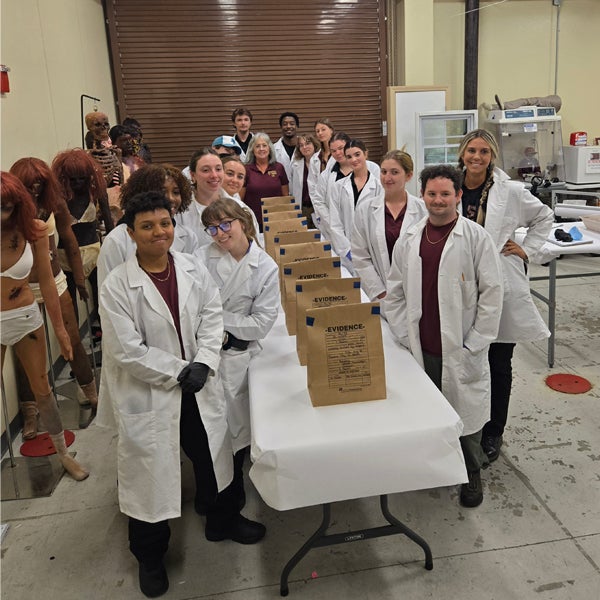DUE PROCESS: Students learn CSI secrets
An empty bag of chips. A discarded plate. A piece of paper with the words, “Give me $ now.” A bloody handprint smeared across a broken tile.
These are among the few remnants left by the suspect of an unsolved case—and perhaps the very keys investigators need to crack it. Cases like this go to Crime Scene Investigation units, also known as “CSI.”

draw conclusions.
FSU Panama City’s CSI program prepares students for private and public sector careers in crime scene investigation, forensic science, criminology, death investigation and more. Featuring hands-on labs that teach real world investigation techniques in an engaging and professional manner, the CSI program was ranked No. 1 for Best Online Forensic Science & Crime Scene Investigation Program by University HQ.
“You really have to know what processes to use and in what order to use them.” — CSI major Raelyn Rogish
“Students engage in realistic simulations, use industry-standard technology, and develop the practical skills that employers value in law enforcement, forensic science, intelligence services and investigative agencies,” said retired police captain Koren Daniels.

Daniels, certified by the International Association for Identification, is an adjunct professor at FSU PC. She received her bachelor of science in Criminology from Florida State University in 1984 and master of science in Law Enforcement Intelligence in 2023.
“It’s a project we’re both passionate about and truly enjoy. Our first class graduated in 2017, and the program has grown ever since, producing graduates who now serve in various roles across the forensic community nationwide,” said Daniels, who has been collaborating on the CSI program with master of Forensic Science Charla Perdue since 2013.
In May, participants in the Impression and Pattern Evidence Lab were wrapping up their final project, a test of their decision-making skills, professionalism and expertise in analysis. They were given a sealed bag containing ten pieces of evidence, each with varying surfaces and fingerprint matrices.

to the human eye.
Their goal: Apply the proper processing techniques in the correct order to collect any viable fingerprints from the items, while documenting the evidence with detailed written notes, photographs and sketches, within only three to four hours.
Students must then organize the information in an unbiased, structured, factual and chronologically-ordered report that would allow future analysts to repeat the process and support the findings in court—just as they would in a real-world investigation.
“I was pretty confident about most of the techniques because we spent so much time during the week getting to play around with them and figure out which methods we prefer to use or what might work best on each substrate,” said CSI major Raelyn Rogish, 20.
Rogish toured a number of CSI programs before finding her perfect fit at FSU PC.
“When it came time to process the evidence for the project, I knew exactly which techniques I wanted to use and how to use them, which is super important,” she continued. “In real life, you only have one of the objects you’re processing, so you really have to know what processes to use and in what order to use them.”

